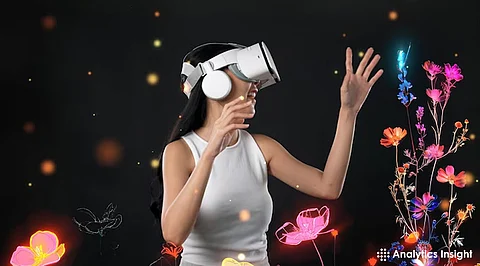

From conversation-translating glasses to rings that predict health danger, these five potential AI gadgets have already started to change lives. With no phones in sight, this is what tomorrow's technology looks like today.
AI-powered devices are becoming increasingly integrated into our daily lives. Imagine entering a room where the lighting adjusts to your mood, wearing a wristband that alerts you to an impending migraine, or having eyeglasses that instantly translate foreign signs.
These innovations are no longer the stuff of science fiction, but a reality that's shaping our world. For tech enthusiasts eager to stay ahead of the curve, here are the top five newest AI gadgets - beyond the usual smartphones and laptops - that deserve immediate attention.
AR specs were earlier poorly designed and less functional. Today, these AI smart glasses offer real-time translation, object recognition, and voice-activated AI for a seamless augmented reality experience. Meta's Ray-Ban Next-Gen is an example of this.
Real-time menu language translation is supported by pointing your glasses at a foreign menu and having the subtitles translated into your language.
Context Awareness: AI recognizes the object landmark or a product, and provides information on it.
Hands-Free Assistance: Speak your questions aloud, and the AI will locate the answers without the phone.
According to a report by Statista, the smart glasses market will reach $15 billion by 2026, and Artificial Intelligence integration is expected to be the most significant driving force.
Brain-computer interfaces (BCIs) were mostly used in medical research labs in the past; however, firms like Neurable and NextMind are now making these technologies more accessible to the public. BCI headbands can read brainwaves, operate smart devices, and enable users to type or play games using only their thoughts. Medical application-related technologies might include communication, allowing people with terminal paralysis to send messages using brain signals.
Thought-Based Commands: Use your brain to turn the lights on or off, send text messages, or control applications.
Adaptive AI Learning: The process improves its accuracy as it learns from the unique patterns of your brain.
Medical Uses: This technology allows paralyzed individuals to communicate through brain signals.
A 2025 MIT report forecasted that BCIs would cut physical device dependency by 40% over the next decade.
Initially, people viewed wearables primarily as step counters. Today, the Oura Ring 4 and Evie Ring employ AI-driven predictive analytics to assess sleep quality, heart rate variability, and disease indicators weeks before symptoms manifest.
Early Health Alert: It identifies a health abnormality, such as atrial fibrillation or sleep apnea.
Mood and Stress Tracking: Artificial intelligence interprets biometric data to suggest activities that seek to reduce stress.
Doctor integration allows for direct data transmission to healthcare providers for preemptive treatment.
A study by Johns Hopkins demonstrated that AI wearables can forecast a heart attack with 85% accuracy.
Robots such as Samsung Baillie and Amazon Astro are no longer characters—they are AI-driven home managers. These robots patrol around a house, controlling smart devices, maintaining inventory, and even serving as companions.
Emotion Detection: It changes the music and lighting according to your mood.
Home security: Patrols around the home and notifies you of suspicious behavior.
Task automation: place orders for groceries when they are low.
Gartner predicts that by 2027, 1 in 5 households will own an AI robot.
Technologies like Looking Glass and AI Hologram Display have made conventional holograms obsolete. This technology is replete with gesture and voice command features, thus providing new modes of creation, collaboration, learning, and entertainment.
Touchless control allows for the handling of holograms with simple hand movements.
Real-Time AI Rendering: AI instantly converts 2D images into interactive 3D models.
Collaboration Tools -- Multiple people can simultaneously interact with one hologram, individually or together, over a remote connection.
Currently valued at $304 billion, TechCrunch reports that hologram technology is growing at a 35% per annum, while advancements in artificial intelligence are increasing access to these technologies.
These five innovative devices prove that the future is not something we have yet to encounter; it is already here. From health-tech wearables to mind-controlling technologies, facial recognition, and holographic displays, artificial intelligence is transforming how we perceive our daily lives.
Among these five innovations, which one excites you the most? The next significant technological breakthrough could manifest on your wrist, in your eyeglasses, or even in the decoding of your brain signals.
If you want to stay ahead of the trends, keep an eye on these developments. By 2025, the line between science fiction and reality will become increasingly blurred.
